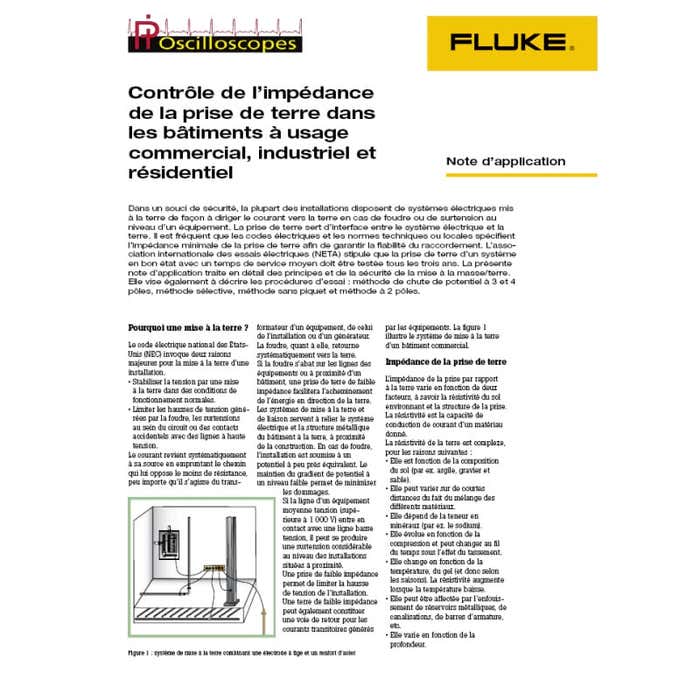Fluke - Grounding system impedance testing in commercial, industrial, and residential buildings
In the interest of safety, most installations have electrical systems grounded to direct current to the ground in case of lightning or overvoltage at equipment level. The grounding serves as an interface between the electrical system and the ground.
It is common for electrical codes and technical or local standards to specify the minimum impedance of the grounding to ensure the reliability of the connection.
The International Electrical Testing Association (NETA) stipulates that the grounding of a system in good condition with an average service time should be tested every three years.
This application note details the principles and safety of grounding.
It also aims to describe testing procedures: 3 and 4-pole potential fall method, selective method, stakeless method, and 2-pole method.





